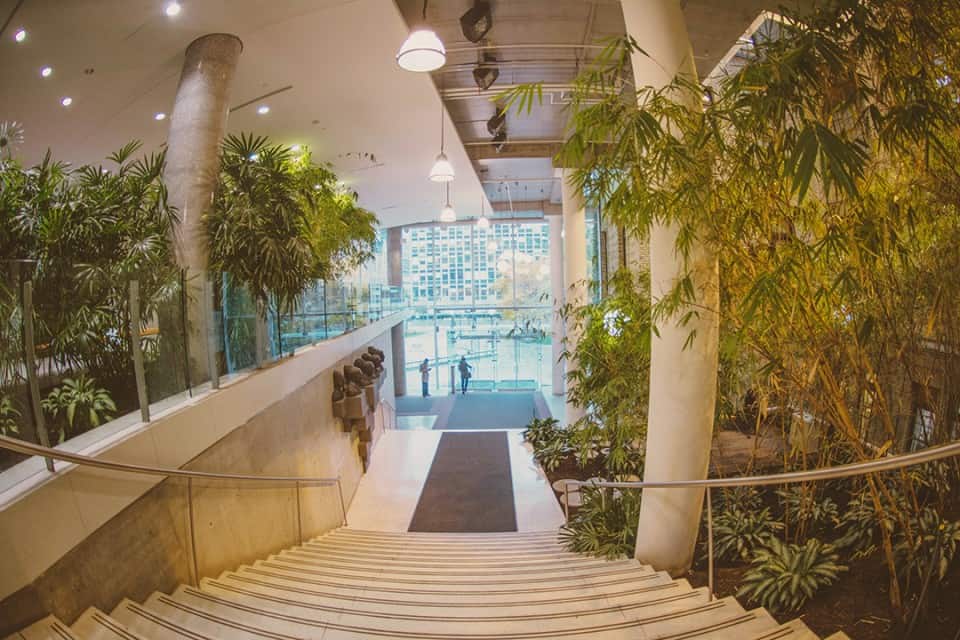Students took a tour of the University of Toronto’s green spaces this week as part of a Living Architecture Tour. The tours were organized by Jonathan Silver, founder of the Living Architecture Tour, and Jess Dawe from the U of T Sustainability Office. Silver discussed the important psychological and environmental benefits of having green spaces, and specifically what benefits they could offer students.
Living architecture offers a multi-sensory experience and allows students to experience a sensory interaction with nature in an otherwise dull, disconnected environment. According to Dawe, green spaces in a workplace environment have been shown to reduce absenteeism and increase productivity. On a university campus, green spaces can help students and staff to feel more relaxed.
“The benefits for students I can classify as psychological benefits, and it’s particularly what I was saying about the multi sensory experience,” said Silver. “Green living infrastructure, green walls especially, you can smell them and you can hear them and you can touch them, and you can feel the humidity on your skin, and that sensory kind of environment brings you out of your head and puts you into your body.”
“So people who are always thinking too much and people who are thinking a lot and people who are students have a chance to stop thinking and to be in their bodies and that feels really good and it’s restorative, it reduces anxiety, it reduces stress, and that’s going to help students a lot, through stressful periods and to produce better work.”
The green wall at the Exam Centre is a space that many students will have the chance to appreciate by the end of their first year. The dense foliage absorbs carcinogens like benzene and formaldehyde, and creates oxygen, which is pumped throughout the entire building.
In addition to aesthetic value, living architecture has important environmental benefits as well. Green roofs, usually comprised of succulents, act as a sponge to absorb excess rainwater; every square metre of roof surface requires about 500 litres of water each year, not including snow or hail, according to Silver.
Many people are unaware of Toronto’s green spaces. Often they are hidden spaces such as rooftops, or inside private buildings not accessible to the public. Through the Living Architecture Tour, Silver said that he aimed to increase awareness of these spaces and their various benefits.


